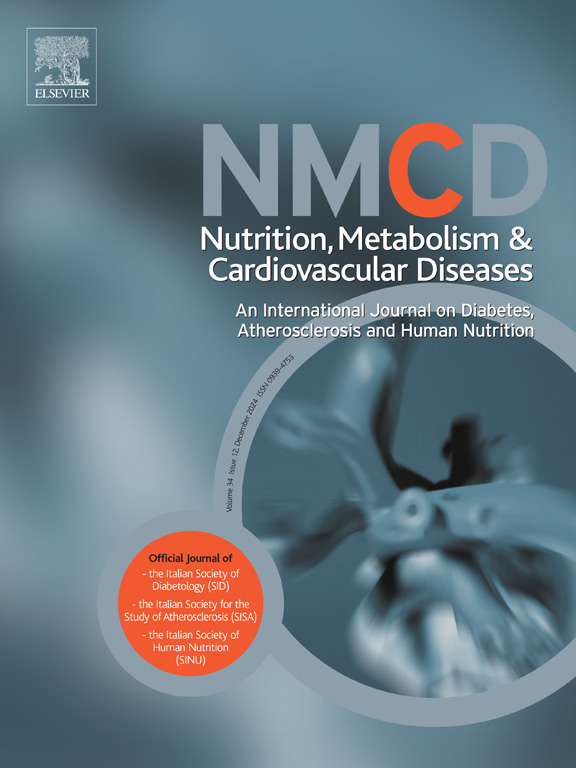Association between estimated cardiorespiratory fitness trajectory and stroke and its subtypes: A prospective cohort study
IF 3.3
3区 医学
Q2 CARDIAC & CARDIOVASCULAR SYSTEMS
Nutrition Metabolism and Cardiovascular Diseases
Pub Date : 2025-02-21
DOI:10.1016/j.numecd.2025.103923
引用次数: 0
Abstract
Background and aims
The association between estimated cardiorespiratory fitness (eCRF) and stroke is ethnically heterogeneous, and conclusions are inconsistent among different stroke subtypes. The aim was to examine the relationship between eCRF trajectory and stroke and its subtypes in the Chinese population.
Methods and results
37,881 participants from the Kailuan Study (2006–2021) who underwent three waves survey and were free of cancer and stroke before or during 2010 were included in this study. The main outcome was stroke, involving ischemic stroke (IS) and intracerebral hemorrhage (ICH). The relationships were assessed using the Cox proportional hazard model. Three distinct eCRF trajectories were identified during 2006–2010: low, moderate, and high. A total of 2150 stroke events, including 1944 cases of IS and 231 cases of ICH, were reported during a median follow-up of 11.04 (interquartile range: 10.65–11.33) years. Compared to the low eCRF trajectory group, participants in the high eCRF trajectory group were associated with a 31 % lower risk of stroke (hazard ratio [HR] [95 % CI], 0.69 [0.60–0.81]), a 30 % lower risk of IS (0.70 [0.59–0.82]), and a 43 % lower risk of ICH (0.57 [0.36–0.91]). Notably, the association between the high eCRF trajectory and IS (P interaction = 0.0270) was stronger among women than men.
Conclusion
A long-term high eCRF level is associated with a decreased risk of stroke, especially ICH. Therefore, achieving or sustaining a high eCRF level over time could be a beneficial strategy for decreasing the risk of stroke.
估计心肺功能轨迹与中风及其亚型之间的关系:一项前瞻性队列研究。
本文章由计算机程序翻译,如有差异,请以英文原文为准。
求助全文
约1分钟内获得全文
求助全文
来源期刊
CiteScore
6.80
自引率
2.60%
发文量
332
审稿时长
57 days
期刊介绍:
Nutrition, Metabolism & Cardiovascular Diseases is a forum designed to focus on the powerful interplay between nutritional and metabolic alterations, and cardiovascular disorders. It aims to be a highly qualified tool to help refine strategies against the nutrition-related epidemics of metabolic and cardiovascular diseases. By presenting original clinical and experimental findings, it introduces readers and authors into a rapidly developing area of clinical and preventive medicine, including also vascular biology. Of particular concern are the origins, the mechanisms and the means to prevent and control diabetes, atherosclerosis, hypertension, and other nutrition-related diseases.

 求助内容:
求助内容: 应助结果提醒方式:
应助结果提醒方式:


